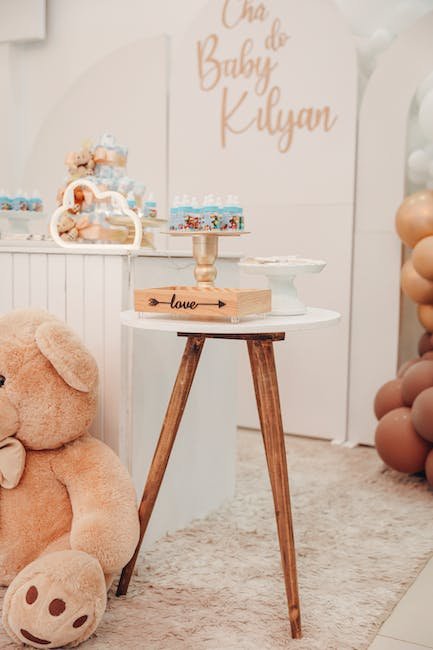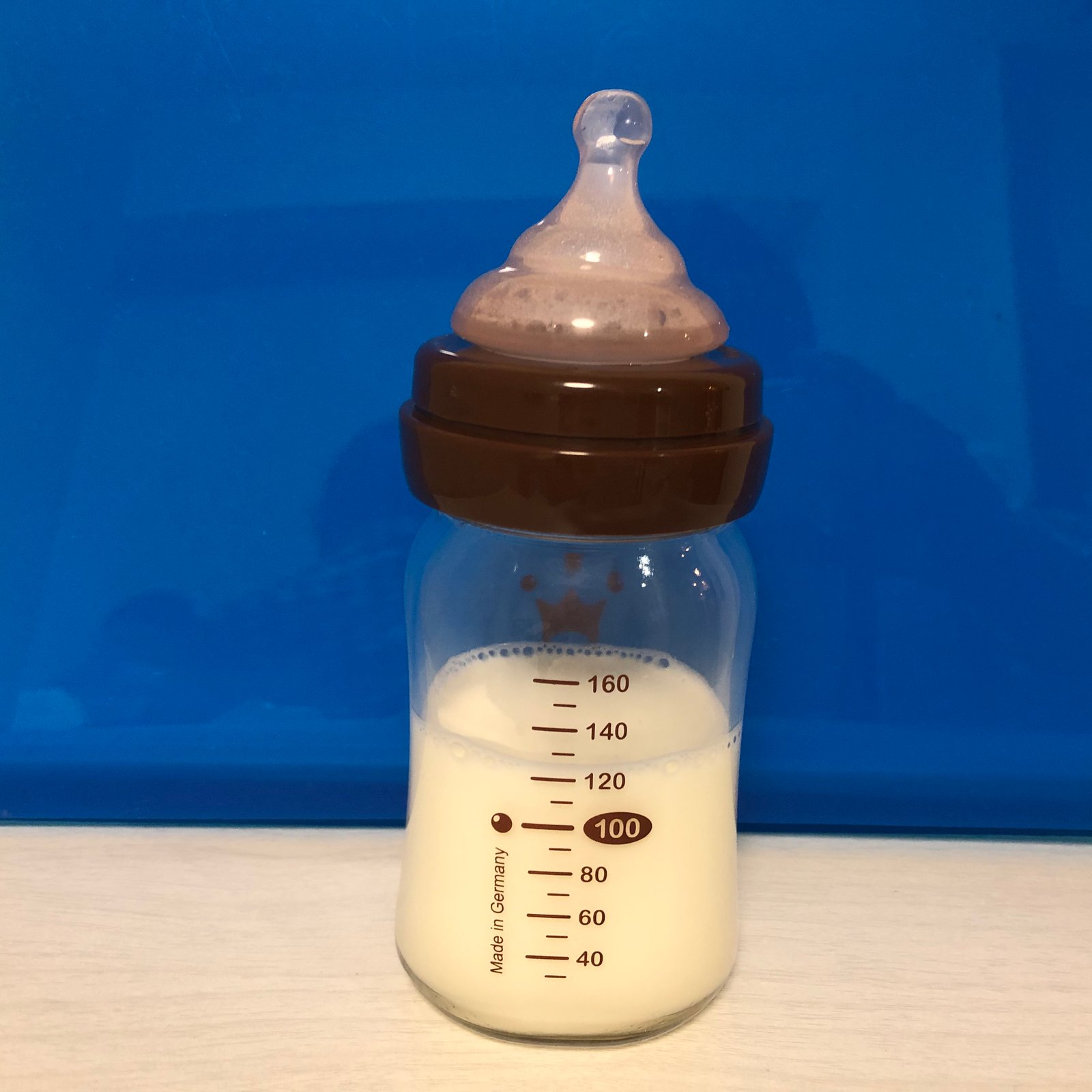From the moment your little one enters the world, you become their ultimate protector, their constant source of comfort, and their guide along the incredible journey of growth. As a parent, you strive to make every decision with utmost care and consideration. And when it comes to nourishing your baby, choosing the right bottle and nipple becomes an art in itself. The market offers an overwhelming variety of options, each promising to be the perfect fit for your precious bundle of joy. In this article, we will navigate the labyrinth of nipple flows, helping you unravel the mystery and identify the perfect match to ensure a peaceful and effortless feeding experience for you and your little one. So, join us as we embark on the quest of finding the key to contented bottle feeding for your baby.
Table of Contents
- Understanding the Different Nipple Flow Options for Baby Bottles
- Factors to Consider When Choosing the Right Nipple Flow for Your Baby
- A Comprehensive Guide to Selecting the Appropriate Nipple Flow for Your Baby Bottle
- Recommendations for Choosing the Ideal Nipple Flow Based on Your Baby’s Age and Feeding Habits
- Expert Tips for Ensuring a Smooth Feeding Experience with the Right Nipple Flow
- Q&A
- In Summary

Understanding the Different Nipple Flow Options for Baby Bottles
When it comes to choosing the right bottle for your little one, nipple flow options play a crucial role in ensuring a comfortable feeding experience. Understanding the different nipple flow options available can help you find the perfect fit for your baby’s needs.
1. Slow Flow Nipples: These nipples are designed for newborns and younger babies who are still developing their sucking skills. They have a small hole that allows for a slow and controlled flow of milk, mimicking the natural pace of breastfeeding. Slow flow nipples are ideal for preventing choking and reducing the risk of overfeeding.
2. Medium Flow Nipples: As your baby grows and becomes more skilled at sucking, medium flow nipples provide a slightly faster milk flow. They are suitable for babies aged 3 to 6 months who can handle a slightly higher milk flow without any discomfort.
3. Fast Flow Nipples: Once your baby reaches the age of 6 months or starts showing signs of frustration during feeding, it may be time to switch to fast flow nipples. These nipples have larger or multiple holes, allowing a faster flow of milk. They are ideal for older babies who can handle a higher milk flow and who want their feeds to be quicker.
Remember, every baby is unique, and their feeding needs may vary. It’s essential to monitor your baby’s feeding habits and consult with your pediatrician to determine which nipple flow option is best for your little one’s comfort and development.
Factors to Consider When Choosing the Right Nipple Flow for Your Baby
Choosing the right nipple flow for your baby is an important decision that can affect their feeding experience and overall comfort. There are several factors to consider when making this choice, to ensure that your little one is getting the appropriate amount of milk and is not overwhelmed or frustrated during feedings.
- Age: One of the key factors to consider is your baby’s age. Most bottle nipples are labeled with different flow rates, usually ranging from slow to fast. Newborns or younger babies typically require a slower flow, as their sucking reflexes are not as strong. As they grow older and their swallowing skills develop, you may need to switch to a faster flow to match their needs.
- Feeding Pace: Observing your baby’s feeding pace can also help determine the right nipple flow. Some babies naturally feed at a faster pace, while others prefer a slower, more relaxed feeding. Choosing a nipple flow that aligns with your baby’s natural pace can help prevent them from getting frustrated or overwhelmed by a flow that is too fast or too slow.
- Comfort: Your baby’s comfort during feedings should be a top priority. If you notice signs of discomfort, such as excessive milk leaking from the sides of their mouth or difficulty latching onto the nipple, it may be an indication that the flow is not right for them. Trying out different nipple flows and observing their reaction can help you find the best fit for your little one.
Remember, every baby is different, and what works for one may not work for another. It’s essential to pay attention to your baby’s cues and make adjustments accordingly. By considering their age, feeding pace, and comfort, you can choose the right nipple flow that ensures a pleasant and hassle-free feeding experience for both you and your baby.

A Comprehensive Guide to Selecting the Appropriate Nipple Flow for Your Baby Bottle
Choosing the Right Nipple Flow for Your Baby Bottle
When it comes to feeding your little one, selecting the appropriate nipple flow for your baby bottle is essential for their comfort and development. With so many options available, it can be overwhelming to find the perfect match. Fear not, as we’ve put together a comprehensive guide to assist you in making the right decision!
Considerations when selecting a nipple flow:
- Age of your baby: Every baby is unique, and their feeding needs change as they grow. From newborns to older infants, nipples are designed with different flow rates to accommodate their feeding abilities. It is crucial to choose a nipple suitable for your baby’s stage to prevent discomfort or difficulty during feeding.
- Liquid consistency: The viscosity of the liquid you plan to feed your baby impacts the flow rate as well. For thinner fluids like breast milk or water, a slower flow nipple is recommended. For thicker liquids like formula or purees, opting for a faster flow nipple can ensure a smooth feeding experience.
- Baby’s preference: Every baby has their own feeding style and preference. Some might prefer a slower flow for a more relaxed feeding experience, while others may require a faster flow to keep up with their appetite. Observe and understand your baby’s needs to help you choose the most suitable nipple.
Remember, finding the right nipple flow is a journey of trial and error. Be open to trying different sizes and speeds until you discover the perfect fit for your baby. Providing a comfortable and enjoyable feeding experience is essential for their growth and overall well-being.
Recommendations for Choosing the Ideal Nipple Flow Based on Your Baby’s Age and Feeding Habits
Every baby is unique, and as they grow, their feeding needs change. Choosing the right nipple flow for your little one can contribute to a comfortable and enjoyable feeding experience. Here are some recommendations to help you select the ideal nipple flow based on your baby’s age and feeding habits:
- Newborns (0-3 months): During this crucial stage, your baby’s sucking reflex is still developing. Opt for a slow flow nipple that mimics the pace of breastfeeding. This will ensure that they don’t get overwhelmed while feeding and can regulate their milk intake at a comfortable pace.
- Infants (3-6 months): As your baby grows and becomes more accustomed to feeding, consider transitioning to a medium flow nipple. This will provide them with a bit more milk per suck, accommodating their increased appetite and faster sucking patterns.
- Active feeders (6+ months): If your little one has become an avid eater and is displaying a strong sucking reflex, a fast flow nipple may be appropriate. These nipples allow a larger amount of milk to flow through, matching their growing appetite and energetic feeding behavior.
Remember, each baby develops at their own pace, so it’s essential to observe your little one’s cues during feeding time. If you notice signs of discomfort or frustration, it may indicate a need to adjust the nipple flow to better suit their needs. Ultimately, finding the ideal nipple flow ensures a harmonious feeding experience for both you and your baby.
Expert Tips for Ensuring a Smooth Feeding Experience with the Right Nipple Flow
Feeding your baby can be a beautiful bonding experience, but it can also come with its challenges. One of the important factors in ensuring a smooth feeding experience is choosing the right nipple flow for your little one. Nipple flow refers to the rate at which the milk or formula flows from the bottle nipple to your baby’s mouth, and it plays a crucial role in their comfort and overall feeding satisfaction. Here are some expert tips to help you navigate the world of nipple flows:
1. Observe your baby: Every baby is unique, and their feeding preferences may vary. Take note of how quickly your baby drinks from the bottle and their level of comfort during feeds. If they seem to be struggling or getting frustrated, it may be a sign that the nipple flow is too fast or too slow.
2. Start with a slow flow: For newborns and younger babies, it’s generally recommended to start with a slow flow nipple. This helps mimic the natural flow of breast milk and ensures that your baby isn’t overwhelmed by a fast flow. Slow flow nipples can also promote healthy feeding habits, as your baby needs to work a bit harder to extract the milk.
3. Gradually adjust as needed: As your baby grows and becomes more skilled at feeding, you may find that they require a faster flow. Monitor their cues and consider moving up to a medium or fast flow nipple if their current flow seems insufficient. It’s important to make these transitions gradually to avoid overwhelming your little one.
4. Look for anti-colic features: Some bottle nipples come with built-in anti-colic systems to reduce the intake of air and minimize discomfort during feeding. These features can be beneficial, especially if your baby is prone to gas or reflux.
Remember, finding the right nipple flow is a process of trial and error. What works for one baby may not work for another. Trust your instincts, observe your baby’s cues, and consult with your pediatrician or lactation consultant if you have concerns. With a little patience and experimentation, you’ll soon discover the perfect nipple flow that ensures a smooth and enjoyable feeding experience for both you and your baby.
Q&A
How do I know which nipple flow is suitable for my baby?
The right nipple flow depends on your baby’s age and feeding ability. Newborns usually require a slow flow, while older babies may need faster flows to keep up with their sucking strength.
What is a slow flow nipple and when should I use it?
A slow flow nipple has the smallest hole size, allowing a slow and steady flow of milk. It is ideal for newborns who are still developing their sucking skills and need a pace that mimics breastfeeding.
When should I introduce a medium flow nipple?
Around 3 to 6 months, when your baby’s sucking ability has improved, you may introduce a medium flow nipple. It offers a slightly faster flow rate to accommodate your baby’s increasing appetite.
What is the purpose of a fast flow nipple?
Fast flow nipples are designed for older babies who can handle a quicker and more generous milk flow. These nipples are convenient for parents who want to speed up the feeding process or if your baby appears frustrated with a slower flow.
How can I tell if the nipple flow is too fast for my baby?
If your baby chokes, coughs, or seems overwhelmed during bottle feeding, it might be an indication that the nipple flow is too fast. Alternatively, if your baby is frequently pulling away from the bottle or shows signs of discomfort, consider switching to a slower flow nipple.
What if my baby is consistently taking too long to finish a bottle?
If your baby is taking excessively long to finish a bottle, it could be a sign that the nipple flow is too slow for their development stage. Try switching to a slightly faster flow nipple and see if it improves their feeding efficiency.
Can I switch nipple flows frequently?
It is generally recommended to introduce new flows gradually and monitor your baby’s response. Frequent switches between flow rates can confuse your baby and affect their feeding patterns. Observe your baby’s cues and consult with your pediatrician if you’re unsure about when to transition to a different nipple flow.
In Summary
As we draw this informative guide to a close, we hope it has unfolded the mystery surrounding the world of nipple flow for baby bottles, empowering you to make the right choice for your little one. With careful consideration and understanding of your baby’s needs, you are now equipped with the knowledge to navigate through the sea of options, confidently selecting the perfect nipple flow that will ensure a comfortable and nourishing feeding experience.
Remember, dear parents, that each baby is unique, and their preferences may evolve over time. As you embark on this marvelous journey of nurturing your little bundle of joy, we encourage you to observe their cues and adapt as necessary. The art of bottle feeding is a delicate dance, where patience, love, and attentiveness take center stage.
By laying the foundations for a seamless feeding routine, you offer your baby more than just milk; you impart a sense of security and sustenance, strengthening the bond they share with you. Choosing the right nipple flow transcends beyond a mere practicality; it enhances this intimate connection, allowing you to cherish each feeding moment with pure serenity.
As you continue on your quest to provide the utmost comfort and nourishment for your little one, remember that a baby’s needs change as they grow. Always be attuned to their ever-evolving preferences and strive to maintain an open-minded approach. Whether you opt for a slower flow to emphasize bonding or a faster flow to meet their increasing appetite, trust your instincts and let your baby’s needs guide you.
With the plethora of choices available, we understand that the decision may feel overwhelming at times. However, armed with the insights from this article, we trust that you can now navigate the vast ocean of nipple flows with confidence and ease. Embrace this opportunity to curate a feeding experience tailored to your baby’s individuality, paving the way for joyful, peaceful, and truly rewarding moments that will forever be etched in your hearts.
May this guide be a source of enlightenment and inspiration as you embark on this incredible journey of parenthood. Cherish the simple acts of feeding, the intimate connections established, and the unwavering bond that only grows stronger with each passing day. Here’s to a nourished and content baby, and to your unwavering dedication in providing the very best for your precious little one.
As an affiliate, my content may feature links to products I personally use and recommend. By taking action, like subscribing or making a purchase, you’ll be supporting my work and fueling my taco cravings at the same time. Win-win, right?
Want to read more? Check out our Affiliate Disclosure page.